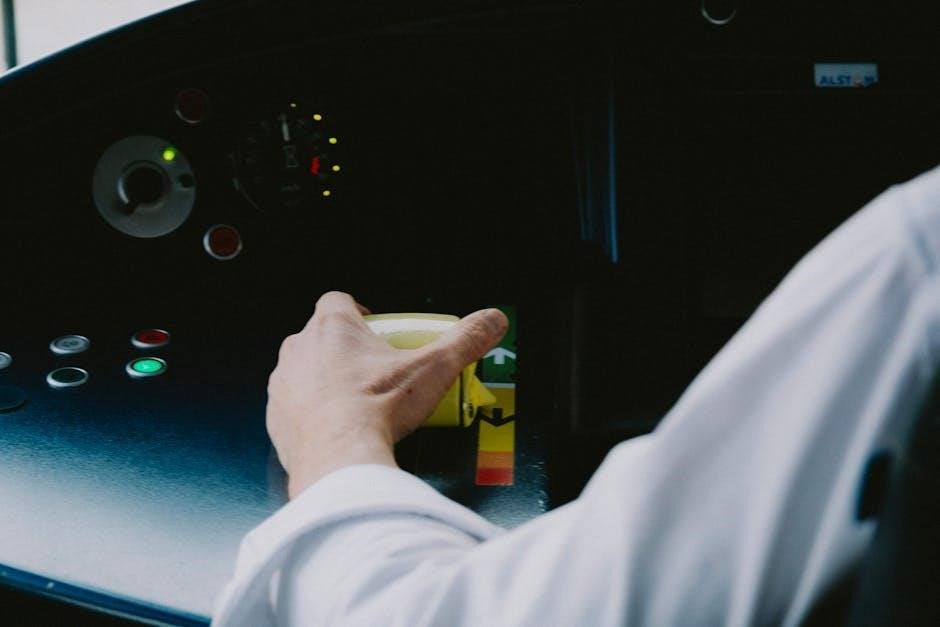Honda Pilot 2015 Manual: A Comprehensive Guide
Finding a 2015 Honda Pilot manual proves challenging, as Honda discontinued printed manuals after 2013․ Utilizing 2012-2015 cross-compatibility, and online forums, offers potential solutions․
The 2015 Honda Pilot represents a robust and family-oriented SUV, known for its spacious interior and reliable performance․ However, accessing a dedicated owner’s manual for this model year can be surprisingly difficult․ Honda ceased producing physical manuals for vehicles newer than 2013, leaving owners to seek alternative resources․ This guide aims to navigate the complexities of finding information pertaining to the 2015 Pilot, acknowledging the limited availability of official documentation․
Fortunately, resourceful owners have discovered that manuals for the 2012-2015 model years often exhibit significant cross-compatibility, offering a viable workaround․ Online forums and third-party providers also present potential avenues for locating helpful information, despite the lack of official Honda-supplied materials․
Understanding the Importance of a Manual
A comprehensive owner’s manual is crucial for maximizing the lifespan and performance of your 2015 Honda Pilot․ It provides essential information regarding routine maintenance, troubleshooting common issues, and understanding the vehicle’s various systems․ Without a manual, owners risk neglecting vital service intervals, potentially leading to costly repairs down the line․
Specifically, understanding the transmission system – a noted change across these years – is paramount․ Knowing how to interpret warning lights, perform fluid checks, and address potential electrical problems empowers owners to proactively maintain their vehicle․ While official Honda resources are scarce for the 2015 model, utilizing compatible manuals and online communities becomes exceptionally important․

Key Features & Specifications of the 2015 Pilot
The 2015 Honda Pilot boasts a 3․5L V6 engine, paired with a 5-speed automatic transmission, offering reliable performance and ample passenger/cargo space․
Engine and Performance Overview
The 2015 Honda Pilot is primarily equipped with a 3․5-liter, 24-valve SOHC i-VTEC V6 engine, delivering a robust 250 horsepower and 253 lb-ft of torque․ This powerplant provides sufficient power for daily commuting, highway cruising, and even light towing – capable of hauling up to 4,500 pounds when properly equipped․ The engine’s i-VTEC system optimizes valve timing for improved fuel efficiency and performance across the rev range․
Performance is generally considered adequate for its class, offering smooth acceleration and a comfortable ride․ While not a sporty SUV, the Pilot prioritizes practicality and dependability․ The engine is known for its longevity and relatively low maintenance requirements, contributing to the vehicle’s overall value․ Owners frequently report positive experiences with the engine’s reliability over extended periods․
Transmission System Details
The 2015 Honda Pilot utilizes a 5-speed automatic transmission as its standard drivetrain configuration․ This transmission is designed for smooth and reliable operation, contributing to the Pilot’s comfortable driving experience․ While a 6-speed automatic was introduced in later model years, the 2015 retains the older 5-speed unit․ Some sources suggest this transmission is a key area to investigate when considering a used 2015 Pilot․
Potential owners should be aware of reported transmission concerns, particularly regarding longevity and potential for issues over higher mileage․ Regular fluid changes and proper maintenance are crucial for maximizing the transmission’s lifespan․ Owners seeking manuals often focus on understanding this transmission’s nuances, as it represents a significant change from earlier Pilot models․
Interior Features and Technology
The 2015 Honda Pilot’s interior prioritizes family comfort and functionality․ Standard features include tri-zone automatic climate control, a rearview camera, and Bluetooth connectivity․ Higher trims add amenities like leather upholstery, a power moonroof, and a premium audio system․ While not cutting-edge by today’s standards, the technology offered in 2015 was competitive․
The owner’s manual details operation of these features, including the infotainment system and available navigation․ Understanding the system’s limitations is important, as Android Auto and Apple CarPlay were not yet standard․ Accessing information on fuse locations, relevant to interior electronics, is often sought within these manuals, aiding in DIY repairs and troubleshooting․
Exterior Design and Dimensions
The 2015 Honda Pilot presents a classic, boxy SUV silhouette, prioritizing interior space over sleek aesthetics․ Its dimensions are substantial, offering three rows of seating and ample cargo capacity․ The manual provides specific measurements – length, width, height, and wheelbase – crucial for parking, garage fitment, and accessory selection like roof racks or hitches․
Understanding exterior component details is also within the manual’s scope․ This includes headlight adjustments, wiper blade replacement procedures, and proper tire inflation pressures (found on a sticker, referenced in the manual)․ Knowing these specifications aids in maintaining the vehicle’s appearance and ensuring optimal performance and safety on the road․

Locating a 2015 Honda Pilot Manual
Official Honda resources are limited; however, third-party providers and online databases offer options․ Cross-compatibility with 2012-2015 models and Honda Pilot forums are helpful․
Official Honda Resources (Limited Availability)
Securing an official 2015 Honda Pilot manual directly from Honda presents a significant hurdle․ Recent information indicates Honda ceased producing printed owner’s manuals for vehicles newer than 2013․ This means a brand-new, directly-from-Honda manual for the 2015 Pilot is unlikely to be readily available through traditional channels like dealerships or the Honda website․
While Honda’s official online resources might offer some supplemental information or downloadable guides related to specific features, a complete, comprehensive owner’s manual mirroring the printed version is generally not provided for this model year․ Owners are therefore encouraged to explore alternative avenues, such as third-party providers and online communities, to obtain the necessary documentation for their vehicle․
Third-Party Manual Providers & Online Databases
Given the limited availability of official Honda manuals, third-party providers emerge as viable alternatives for 2015 Honda Pilot owners․ Several online platforms specialize in automotive manuals, offering both digital downloads and physical copies․ These resources often compile information from various sources, including scanned versions of original manuals and user-contributed data․
However, it’s crucial to exercise caution when utilizing these services․ Verify the provider’s reputation and ensure the manual accurately reflects the 2015 Pilot’s specifications․ Online databases and forums, while potentially helpful, may contain incomplete or inaccurate information․ Thoroughly review any downloaded manual before relying on its guidance for maintenance or repairs․
Utilizing 2012-2015 Cross-Compatibility
A common workaround for obtaining a 2015 Honda Pilot manual involves leveraging cross-compatibility with earlier model years, specifically 2012-2015․ Many owners report that the manuals for these years share significant overlap in information, particularly regarding fundamental maintenance procedures and component locations․ While minor variations may exist, a 2012-2014 manual can often serve as a suitable substitute․
However, be mindful of potential differences, especially concerning the transmission system․ Confirm that the procedures outlined in the older manual align with your 2015 Pilot’s specific configuration before attempting any repairs․ This approach offers a cost-effective solution, but requires careful verification․
Exploring Honda Pilot Forum Resources
Honda Pilot forums represent a valuable, often free, resource for locating 2015 manual information․ Dedicated online communities frequently host shared documents, scanned manuals, and user-generated guides․ Members often upload PDFs of owner’s manuals or specific repair sections, offering a practical alternative to purchasing a physical copy․
These forums also provide a platform to ask specific questions and receive advice from experienced Pilot owners․ Searching existing threads can reveal solutions to common issues and clarify ambiguous instructions․ Remember to verify information obtained from forums with other sources before implementing any repairs or maintenance procedures․

Essential Maintenance Procedures
Regular maintenance, detailed in the manual (or forums), includes oil changes, fluid level checks (coolant, brake, steering), tire care, and battery upkeep for optimal performance․
Routine Oil Change Guide
Performing regular oil changes is crucial for the longevity of your 2015 Honda Pilot’s engine․ While a dedicated manual is scarce, general procedures apply․ Begin by warming the engine slightly․ Locate the oil drain plug underneath the vehicle and carefully remove it, allowing the old oil to drain completely into a suitable container․
Next, replace the oil filter, ensuring the rubber gasket is lubricated with fresh oil before installation․ Reinstall the drain plug with a new crush washer, tightening it to the manufacturer’s specified torque․ Finally, add the correct amount and type of oil (refer to online resources or forums for specifics) and check the oil level with the dipstick․ Properly dispose of the used oil and filter at a designated recycling center․
Fluid Level Checks (Coolant, Brake, Power Steering)
Maintaining proper fluid levels is vital for optimal 2015 Honda Pilot performance․ Regularly inspect the coolant reservoir, ensuring the level falls between the minimum and maximum marks when the engine is cold․ Check the brake fluid reservoir, noting any significant drops which could indicate a leak․ Similarly, examine the power steering fluid reservoir, topping up as needed with the correct fluid type․
Low fluid levels can signal underlying issues․ If frequent topping-up is required, investigate potential leaks in the cooling, braking, or power steering systems․ Consult online Honda Pilot forums for specific guidance on fluid types and reservoir locations, as a dedicated 2015 manual is hard to find․
Tire Maintenance and Rotation
Proper tire maintenance extends the life of your 2015 Honda Pilot’s tires and ensures safe handling․ Regularly check tire pressure – including the spare – using a reliable gauge, and inflate to the pressure listed on the driver’s side doorjamb․ Inspect tires for uneven wear, cuts, or bulges․
Tire rotation is crucial for even wear; A common pattern is to move front tires to the rear and vice versa․ Consult Honda Pilot forums for recommended rotation intervals and patterns specific to your driving conditions․ Maintaining correct tire pressure and rotating tires regularly contributes to fuel efficiency and overall vehicle safety, despite the lack of a dedicated 2015 manual․
Battery Maintenance and Replacement
Maintaining your 2015 Honda Pilot’s battery ensures reliable starting, especially in extreme temperatures․ Regularly inspect the battery terminals for corrosion; clean them with a baking soda and water solution if necessary․ Ensure the battery is securely mounted․
When replacing the battery, disconnect the negative terminal first, then the positive․ Note any electronic presets that may be lost during disconnection․ Referencing Honda Pilot forums can provide guidance on compatible battery types and proper installation procedures, given the limited availability of a specific 2015 manual․ Proper disposal of the old battery is also essential for environmental reasons․

Troubleshooting Common Issues
Addressing transmission concerns, electrical problems, and engine performance issues often requires forum resources due to limited 2015 manual availability; understand warning lights․
Addressing Transmission Concerns
Transmission issues in the 2015 Honda Pilot can be a significant concern, and pinpointing the root cause often requires careful diagnosis․ Given the limited availability of a dedicated 2015 owner’s manual, leveraging resources like Honda Pilot forums becomes crucial․ Many users report that the 2012 manual offers substantial cross-compatibility, providing valuable insights into potential transmission problems and troubleshooting steps․
Common issues may include slipping gears, rough shifting, or unusual noises․ Checking the transmission fluid level is a good starting point, ensuring it’s clean and at the proper level․ Online repair guides and tutorials, often shared within these communities, can offer detailed instructions for more complex diagnostics․ Remember, professional repair services are available if self-diagnosis proves insufficient․
Dealing with Electrical System Problems
Electrical issues in the 2015 Honda Pilot can range from minor inconveniences to serious malfunctions․ As official manuals are scarce, relying on community resources and online databases is essential for diagnosis and repair․ Honda Pilot forums frequently discuss common electrical gremlins, offering potential solutions shared by experienced owners․

Problems might include malfunctioning lights, issues with the audio system, or problems with power windows․ A crucial first step is checking the fuse box locations and diagrams – information often found in compatible year manuals (like the 2012 version)․ Basic electrical system schematics, available online, can aid in tracing circuits․ If problems persist, seeking a qualified mechanic is advisable․
Diagnosing Engine Performance Issues
Engine performance problems in the 2015 Honda Pilot require a systematic approach to diagnosis, especially given the limited availability of official manuals․ Online Honda Pilot forums are invaluable resources, detailing common issues experienced by owners․ Symptoms like rough idling, decreased power, or unusual noises should be investigated promptly․
Begin by checking for obvious issues – loose connections or damaged wiring․ Utilizing a 2012 manual (often considered cross-compatible) can provide insights into the engine’s operation․ Pay attention to warning lights; understanding their meaning is crucial; If the problem persists, professional diagnosis utilizing specialized tools may be necessary to pinpoint the root cause and prevent further damage․
Understanding Warning Lights and Indicators
Decoding warning lights in the 2015 Honda Pilot is vital for preventative maintenance and avoiding costly repairs, particularly with limited manual access․ The check engine light (CEL) indicates a broad range of potential issues, requiring a scan tool for specific codes․ Other critical lights include those for oil pressure, battery, and brake systems․
Consulting online Honda Pilot forums can help decipher less common indicators․ Remember that a flashing CEL signals a severe problem needing immediate attention․ While older manuals (like the 2012 version) may offer general guidance, specific light meanings can vary․ Ignoring warning lights can lead to significant engine damage and compromise safety․

Safety Features and Operation
The 2015 Pilot’s safety relies on airbags and a robust braking system; proper child seat installation is crucial․ Refer to online resources for detailed guidance․
Airbag System Information
The 2015 Honda Pilot incorporates a sophisticated airbag system designed for optimal occupant protection during collisions․ This system includes front airbags for both driver and passenger, side airbags mounted in the front seats, and side curtain airbags extending to cover both rows of seating․ Understanding the system’s operation is vital for safe vehicle operation․
It’s crucial to remember that airbags are supplemental restraints and work best when used in conjunction with seatbelts․ Airbag deployment is triggered by sensors that detect the severity of an impact․ Improper seating positions or modifications to the vehicle’s interior could affect airbag performance․ Always ensure passengers, especially children, are properly restrained and positioned․ Refer to the owner’s resources for detailed diagrams and warnings regarding the airbag system․
Braking System Overview
The 2015 Honda Pilot features a robust braking system designed for reliable stopping power and control․ It utilizes a hydraulic dual-circuit braking system with ventilated front discs and solid rear discs․ Anti-lock Braking System (ABS) is standard, preventing wheel lockup during hard braking and maintaining steering control․ Electronic Brake-force Distribution (EBD) optimizes braking force between the front and rear wheels based on vehicle load and conditions․
Regular inspection of brake pads, rotors, and fluid levels is crucial for optimal performance․ Brake fade can occur during prolonged or heavy braking, reducing effectiveness․ Familiarize yourself with the brake pedal feel and any unusual noises․ Always use the correct brake fluid specification when topping up or replacing the fluid․ Consult the service manual for detailed procedures and specifications related to the braking system․
Child Safety Seat Installation
Proper child safety seat installation is paramount for passenger safety in the 2015 Honda Pilot․ The Pilot is equipped with LATCH (Lower Anchors and Tethers for CHildren) lower anchors and upper tether anchors in designated seating positions․ Always refer to both the vehicle owner’s manual and the child safety seat manufacturer’s instructions for correct installation procedures․
Ensure the safety seat is securely fastened and does not move more than one inch side-to-side or front-to-back․ Never install a rear-facing child seat in the front passenger seat if the vehicle is equipped with an active front airbag․ Regularly check the installation to confirm it remains secure․ Incorrect installation can significantly reduce the effectiveness of the safety seat in a collision․

Detailed Component Information
Accessing detailed component information requires schematics․ Locate fuse box diagrams, understand the fuel and cooling systems, and review basic electrical system schematics for repairs․
Fuse Box Locations and Diagrams
Locating the fuse boxes within the 2015 Honda Pilot is crucial for addressing electrical issues․ Typically, there are at least two fuse box locations: one under the dashboard on the driver’s side, and another within the engine compartment․ The under-dashboard fuse box handles interior components like lights, radio, and power windows, while the engine compartment box manages systems like the starter, fuel pump, and cooling fans․
Finding accurate diagrams is essential․ While a dedicated 2015 Pilot manual is scarce, online resources and Honda Pilot forums often share scanned images of the original fuse box layouts․ These diagrams detail each fuse’s amperage and the corresponding component it protects․ Always consult a diagram before replacing a fuse to ensure you’re addressing the correct circuit․
Understanding the Fuel System
The 2015 Honda Pilot utilizes a multi-point fuel injection system, delivering fuel directly to each engine cylinder for optimal combustion․ This system comprises the fuel tank, fuel pump, fuel filter, fuel lines, and the fuel injectors themselves․ The fuel pump, located within the fuel tank, sends fuel to the engine under pressure․ A fuel filter ensures clean fuel reaches the injectors, preventing clogging and maintaining performance․
Regular fuel filter replacement is vital for preventing fuel delivery issues․ Understanding the system aids in diagnosing problems like poor fuel economy or engine misfires․ Always exercise extreme caution when working with the fuel system, disconnecting the negative battery terminal before any repairs to prevent sparks․
Cooling System Operation
The 2015 Honda Pilot’s cooling system prevents engine overheating through a closed-loop process․ Coolant (antifreeze) circulates through the engine block, absorbing heat․ This heated coolant then flows to the radiator, where it dissipates heat to the atmosphere via airflow․ A thermostat regulates coolant temperature, ensuring optimal engine operation․ The water pump drives coolant circulation, while cooling fans enhance radiator efficiency․
Regular coolant flushes are crucial to maintain system effectiveness and prevent corrosion; Inspect hoses and connections for leaks․ Overheating can cause severe engine damage, so promptly address any cooling system concerns․ Proper operation ensures longevity and reliable performance․
Electrical System Schematics (Basic)
The 2015 Honda Pilot’s electrical system is complex, relying on a network of wiring, fuses, relays, and the battery․ A central grounding system ensures proper circuit function․ Key components include the alternator (charging the battery), starter motor (engine ignition), and various sensors providing data to the Engine Control Unit (ECU)․
Basic schematics illustrate power distribution․ The battery provides 12V DC power․ Fuses protect circuits from overloads․ Relays act as switches, controlling high-current devices․ Understanding these fundamentals aids in diagnosing electrical issues․ Detailed schematics require professional service manuals for comprehensive troubleshooting․

Additional Resources
Explore Honda Pilot forums and communities for shared knowledge and repair guides․ Online tutorials and affordable repair services can supplement manual information effectively․
Honda Pilot Forums and Communities
Engaging with online Honda Pilot forums represents a valuable resource for owners seeking information about the 2015 model․ These communities often host threads dedicated to specific issues, repairs, and maintenance procedures, offering practical advice from fellow enthusiasts․ Members frequently share experiences regarding manual availability, suggesting cross-compatibility with 2012-2015 models․
Furthermore, forum users may have digitized or scanned copies of relevant manuals, or be able to direct you to helpful online databases․ Participating in these discussions allows you to tap into a collective knowledge base, potentially resolving issues without incurring the cost of a professional repair service․ Active participation and searching existing threads can yield significant benefits for 2015 Pilot owners․
Online Repair Guides and Tutorials
Numerous online platforms offer repair guides and tutorials for the 2015 Honda Pilot, supplementing the lack of official Honda-provided manuals․ While a dedicated 2015 manual is scarce, resources focusing on similar model years (2012-2015) can prove incredibly useful, particularly regarding transmission systems – a key area of change․
These guides often feature step-by-step instructions, accompanied by images or videos, covering routine maintenance like oil changes and fluid checks, as well as more complex repairs․ Exercise caution and verify information across multiple sources before attempting any work․ Supplementing these resources with forum discussions can provide valuable context and troubleshooting tips․

Finding Affordable Repair Services
Given the difficulty in locating a dedicated 2015 Honda Pilot manual, professional repair services become crucial for complex issues․ Seeking quotes from multiple local mechanics is advisable, comparing both labor rates and parts costs․ Online platforms can facilitate finding reputable shops with customer reviews․
Consider independent Honda specialists, who often possess in-depth knowledge of these vehicles and may offer more competitive pricing than dealerships․ Clearly communicate the specific problem and any diagnostic information gathered․ Utilizing online repair guides (mentioned elsewhere) can help you articulate the issue effectively, potentially reducing diagnostic time and costs․
Understanding Warranty Information (If Applicable)
For a 2015 Honda Pilot, the original factory warranty has likely expired․ However, if the vehicle was previously owned and had extended warranty coverage purchased, verifying its current status is essential․ Contacting the original warranty provider or reviewing purchase documentation will clarify remaining coverage details․
Even without active warranty protection, some repairs might be covered under recalls issued by Honda․ Regularly checking the National Highway Traffic Safety Administration (NHTSA) website for applicable recalls is recommended․ Understanding any existing certified pre-owned (CPO) warranty, if applicable, is also vital before seeking repair services․